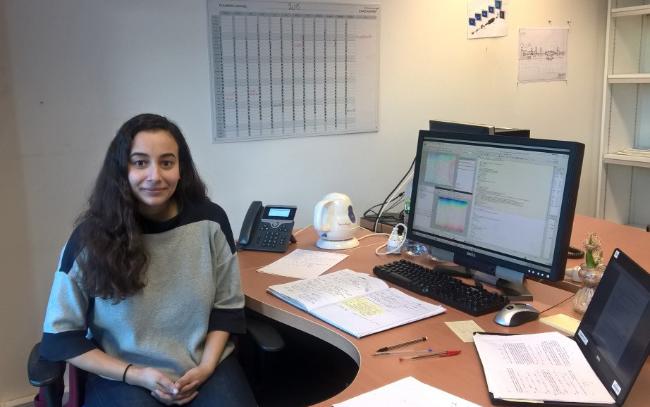Lina Hoummi: “Science explains, enlightens minds, and allows one to act on the future of human kind.”

“In my early years, I wanted to travel through time and space, to become an archaeologist and assimilate every piece of knowledge available. Science and I were meant to be besties. Then, I was told time travel was a myth: it felt like treason, my own dreams swept away like mere dust. I was magnanimous, and kept studying – even harder, to prove them wrong, say hi to Ramses II, high-five Joan of Arc, and take a velociraptor as a pet. This is how I started.
I’ve always loved scientific subjects. Science explains, enlightens minds, and allows one to act on the future of human kind. I attended preparatory classes in maths and physics, yielding to an engineering school, specialising in optics. An organised visit to SOLEIL in my last year made me fall for accelerators: it was the most beautiful physics I have ever witnessed. The synchrotron provides photon beams for few thousand projects a year: the collaboration among scientists is ubiquitous, required and inspiring.”
Lina Hoummi is a PhD student in the QUASAR Group, in a shared project with the synchrotron SOLEIL in France. SOLEIL is a 3rd generation synchrotron: a circular accelerator, with a storage ring that provides 29 beamlines with photon beams of different energies. Her PhD is part of the general effort to increase the brightness of the delivered beams, by reducing the emittance of the machine, i.e. the efficient surface of the electron beam. She studies the links between transverse and longitudinal nonlinear dynamics for the upcoming low emittance rings. This includes nonlinear theory, simulation and programming as well as genetic algorithm based optimisation.
“A stored beam can be seen through two different aspects: the transverse planes, i.e. its motion along the ring compared to a reference particle, and the longitudinal plane, i.e. the time and energy domain. I study the links between the high order nonlinear dynamics and the energy acceptance, for the ultra-low emittance storage rings. Along with this, I optimise the nonlinear design of our lattices to enhance the dynamic aperture, and the beam lifetime.”
“A woman in science, to me, is as tough as being a woman in any environment built for, and by men. Some people told me those studies were too hard, that I should turn into a nurse or a teacher, for those are “feminine jobs”. We needed to fight twice as hard to be recognised, and stand where we are now.”
“[Women scientists] are a constant inspiration: they demonstrate strength, motivation and commitment to their research. I just hope I can add my humble contribution to theirs.”
“Through centuries, many women have seen their studies lessened, even stolen by men, and not only in science! I can think of Milena Maric Einstein, co-worker of Albert, Rosalind Franklin for the DNA structure, and Lise Meitner and her discovery of the nuclear fission. Those women are a constant inspiration: they demonstrated strengths and commitment to their research. I just hope I can add my humble contribution to theirs.”